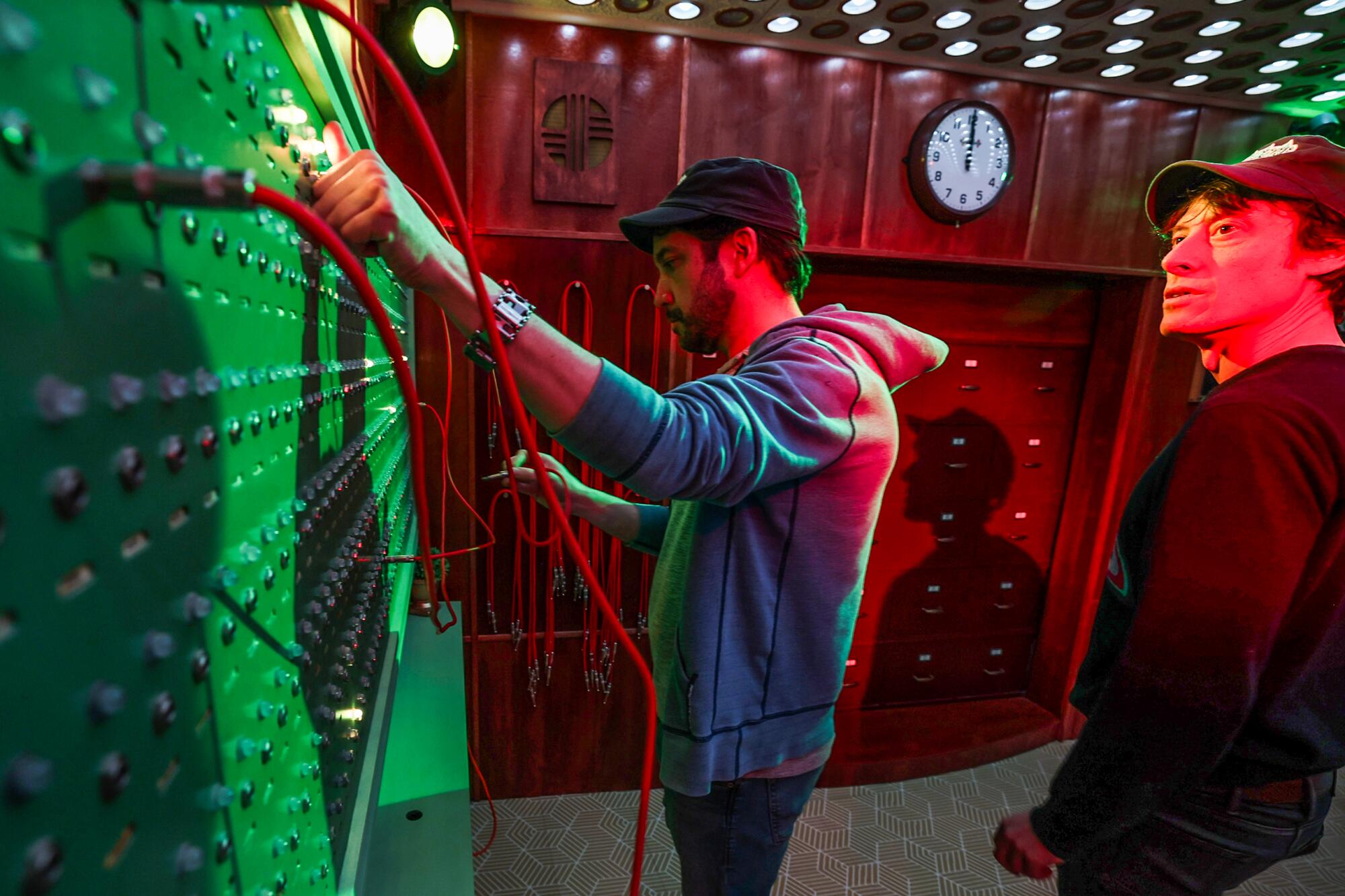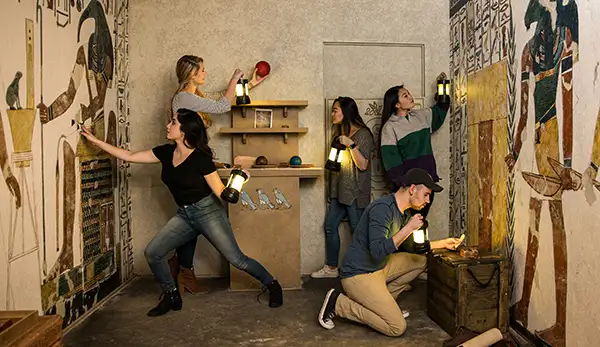Group Techniques: How to Team up Efficiently in an Escape Area
Navigating the complexities of a retreat room requires even more than mere interest; it requires a well-coordinated technique based in clear interaction, strategic role jobs, and adept time management. Groups should actively pay attention per participant's understandings, assign roles that straighten with specific staminas, and keep routine check-ins to make sure emphasis and stop redundancy. By cultivating an environment that values communication and flexibility, teams can considerably enhance their efficiency and success rates. The nuances of these strategies can change the experience, however just how exactly can they be carried out to optimize the potential for success?
Establish Clear Interaction
To facilitate clear communication, it is necessary to assign a main point of contact for information circulation. This duty involves summarizing findings and proposed methods to make sure every person stays on the same page. In addition, embracing a systematic technique to conversations can stop chaotic exchanges. Short, concentrated updates from each group participant can keep the team informed without overwhelming them with info - best escape room.

Appoint Roles Strategically
While clear communication establishes the structure for reliable teamwork, designating functions tactically makes sure that each staff member's staminas are utilized efficiently. In an escape space situation, the time-sensitive and intricate nature of difficulties demands a well-organized approach to job delegation. By determining and leveraging private proficiencies, groups can optimize their analytical capacities and improve overall efficiency.
First, assess the unique abilities and attributes of each individual. For instance, someone with a keen eye for detail might master locating concealed objects, while a logical thinker can be better matched to fixing challenges - best escape room. It's similarly vital to have a leader that can supervise progression, manage the timeline, and make decisive calls when needed. This function often requires strong business and interpersonal skills.
2nd, make sure that roles are flexible and versatile. As new difficulties emerge, the group has to be able to pivot, reapportioning tasks as called for. This adaptability helps keep energy and avoids traffic jams that can occur as a result of inflexible function assignments.
Ultimately, a strategic technique to duty task not just makes best use of the toughness of each employee yet likewise cultivates a natural atmosphere, driving the group towards a successful getaway.
Utilize Diverse Skills
Identifying and utilizing the diverse abilities within your group can significantly raise your efficiency in an escape room. Each employee brings unique toughness to the table, and successfully leveraging these capacities can speed up problem-solving and enhance overall performance. A group participant with strong logical abilities might succeed at figuring out complicated codes or patterns, while one more with eager empirical capabilities might quickly find hidden hints that others might ignore.
Reliable communication is essential to utilizing these diverse abilities. Motivate employee to articulate their understandings and ideas promptly, making sure that all possible solutions are considered. This comprehensive method fosters a dynamic environment where creative thinking and crucial thinking can prosper. In addition, assigning jobs that line up with each participant's staminas can protect against bottlenecks and guarantee that progress is continual.
Furthermore, variety in skills often translates to variety in assuming styles, which is very useful in a getaway space setting. While some difficulties might call for rational reasoning and accuracy, others could gain from imaginative and side thinking. By recognizing and leveraging this diversity, have a peek at these guys teams can attend to a wider variety of challenges much more properly, therefore increasing their opportunities of a successful getaway.
Manage Time Properly

First, designate preliminary mins for a quick survey of the space. Determine noticeable puzzles and divide tasks based on staff member' toughness, guaranteeing that no one is idle. Establish inner time checkpoints to assess development occasionally; for instance, purpose to have half the puzzles addressed by the mid-point of the video game. This technique can assist keep the team focused and protect against time from look at this now escaping unnoticed.
Furthermore, prevent one-track mind. If a challenge is taking as well long, rotate group participants or move on to another obstacle, returning later on with fresh point of views. Interaction is paramount-- maintain everyone upgraded on resolved puzzles and staying tasks to prevent repetitive initiatives.
Last but not least, make use of any type of hints or clues sparingly however tactically - best escape room. Knowing when to request aid can save valuable time. By sticking to these time management concepts, teams can considerably improve their possibilities of an effective and satisfying retreat space experience
Debrief and Reflect
Reflection is a vital aspect of group development and improvement in the context of escape rooms. As soon as the challenge is completed, whether successfully or otherwise, it is crucial for the team to involve in an organized debriefing session. This procedure enables employee to evaluate their efficiency, identify toughness, and pinpoint areas for improvement.
Begin the debrief by reviewing what went well. Highlight particular instances of reliable communication, problem-solving, and cooperation. Identifying these positive behaviors enhances them and motivates their repetition look here in future difficulties.
Review moments of confusion, miscommunication, or inadequate techniques. Encourage an open and constructive dialogue where team participants can share their perspectives without fear of criticism.
Conclusion
In verdict, successful partnership in a retreat room is asserted upon clear interaction, tactical duty projects, the efficient application of diverse abilities, and skilled time management. By developing a cohesive and adaptive team environment, the likelihood of successfully addressing challenges and attaining the objective of leaving the room is significantly boosted.